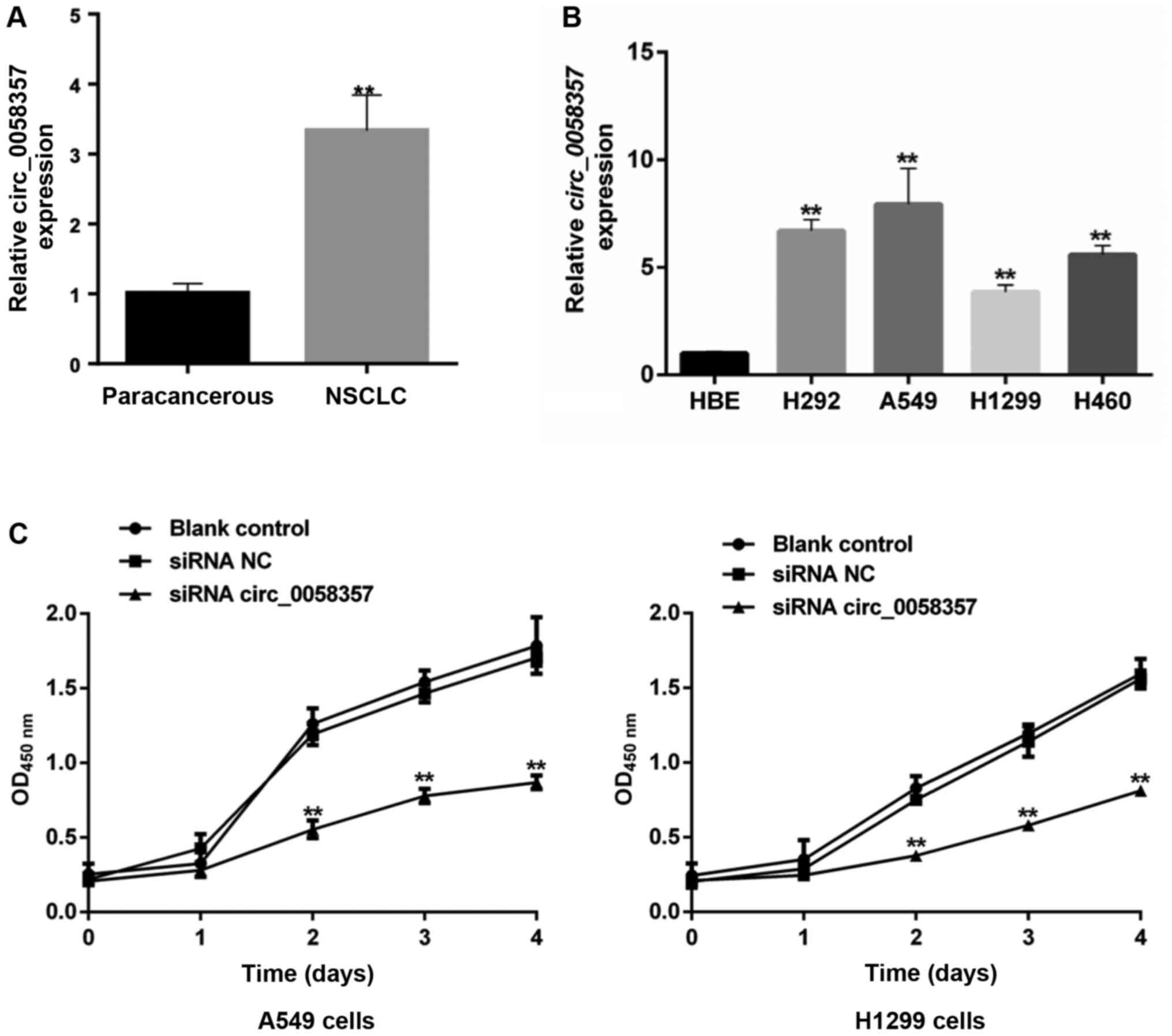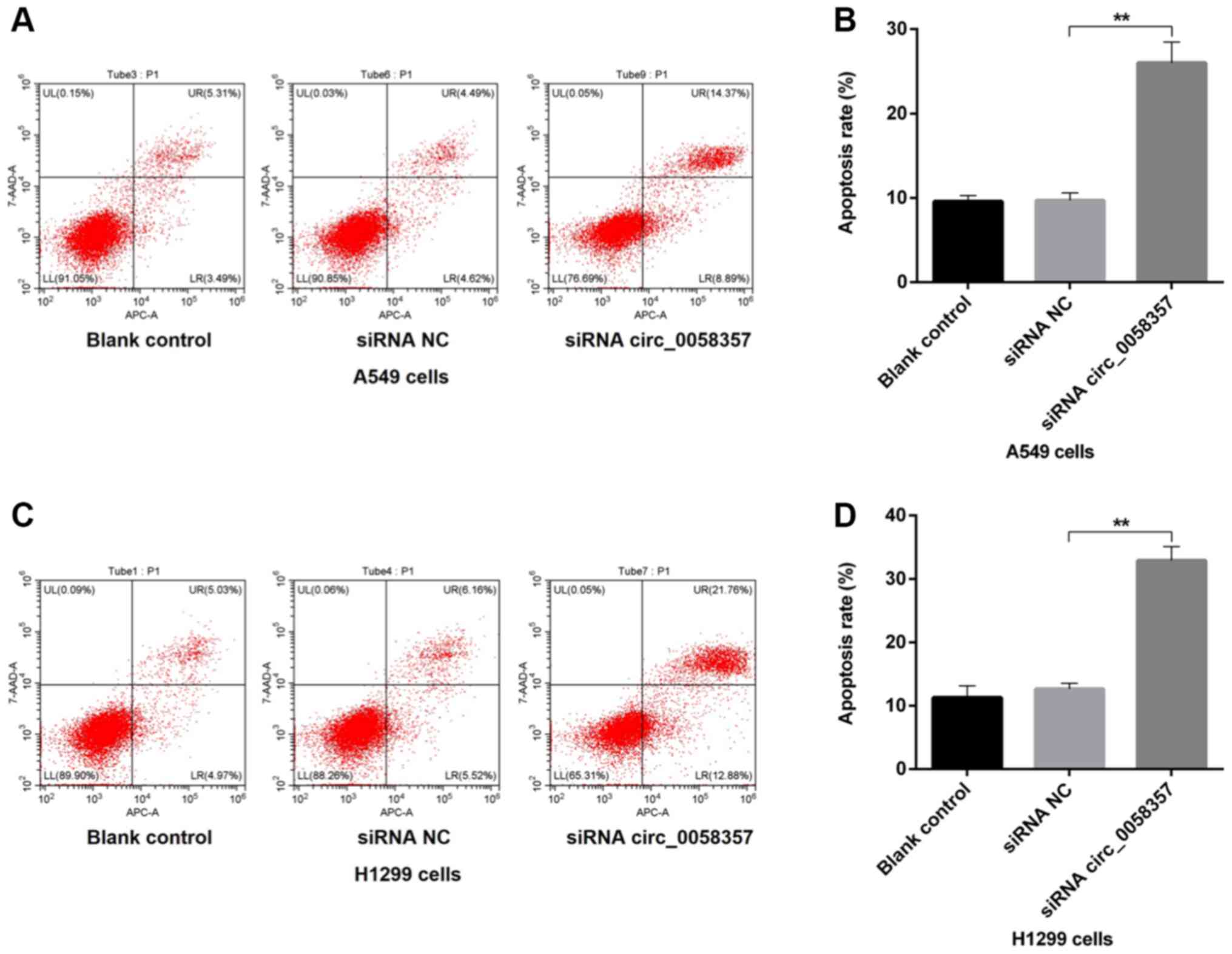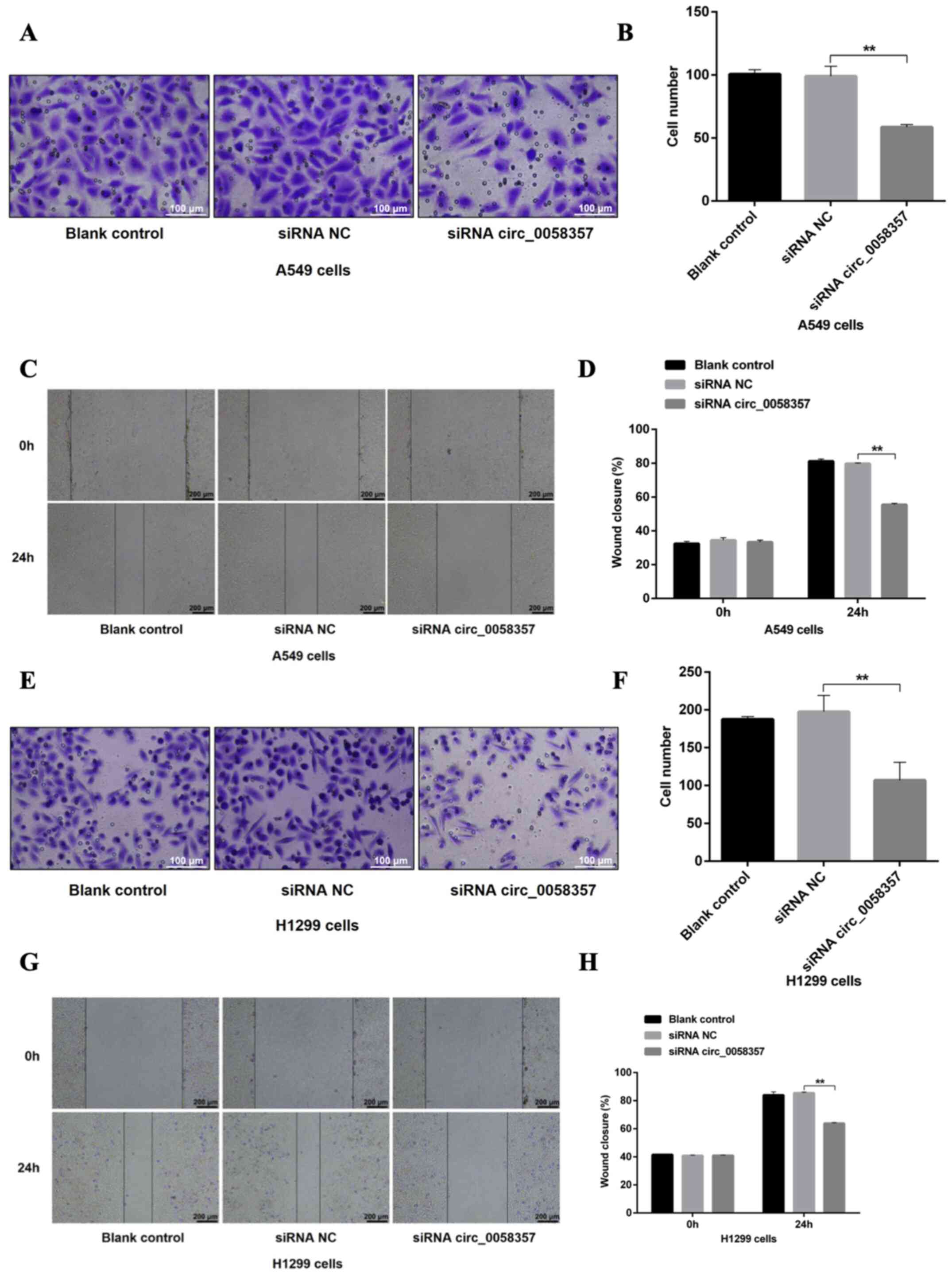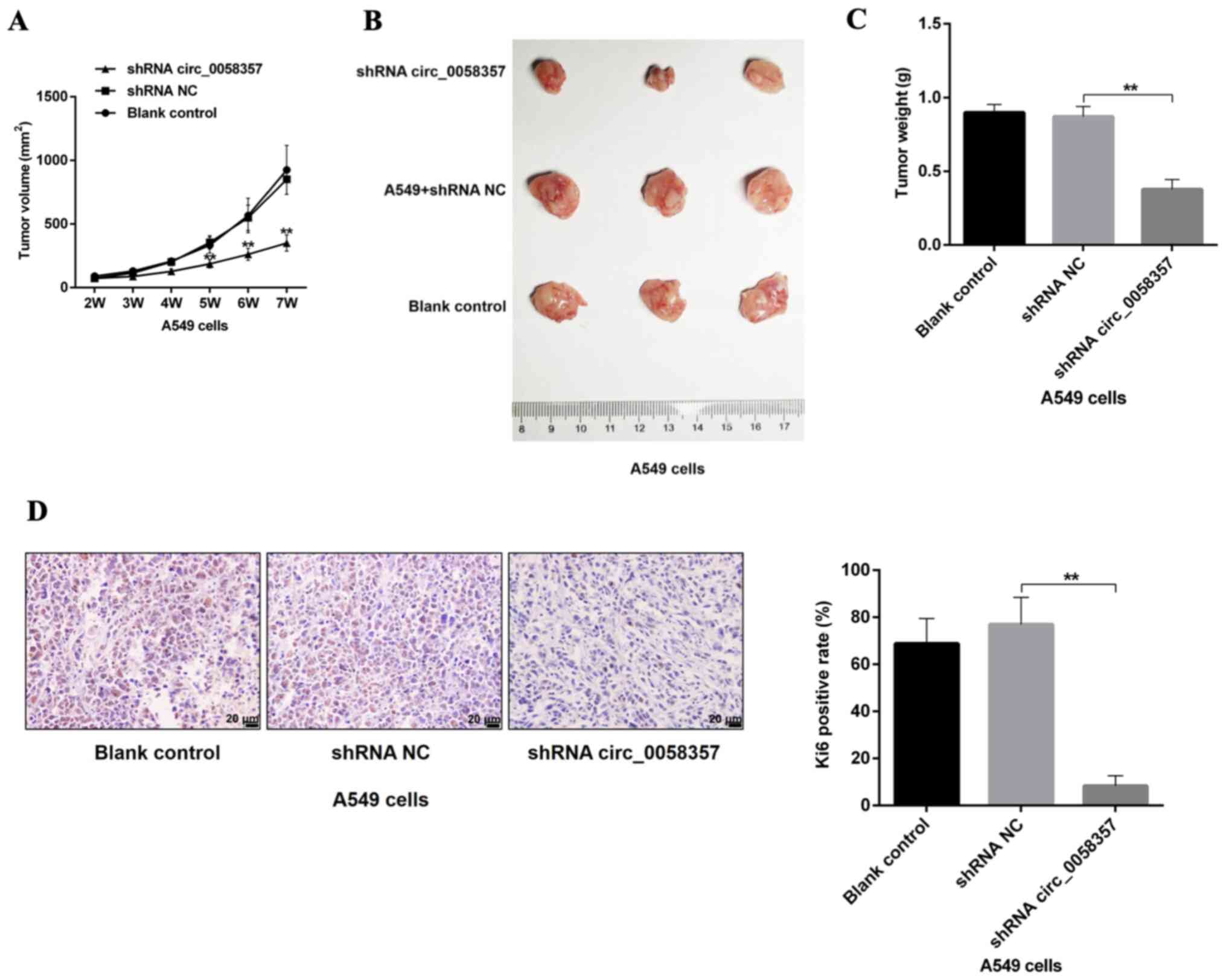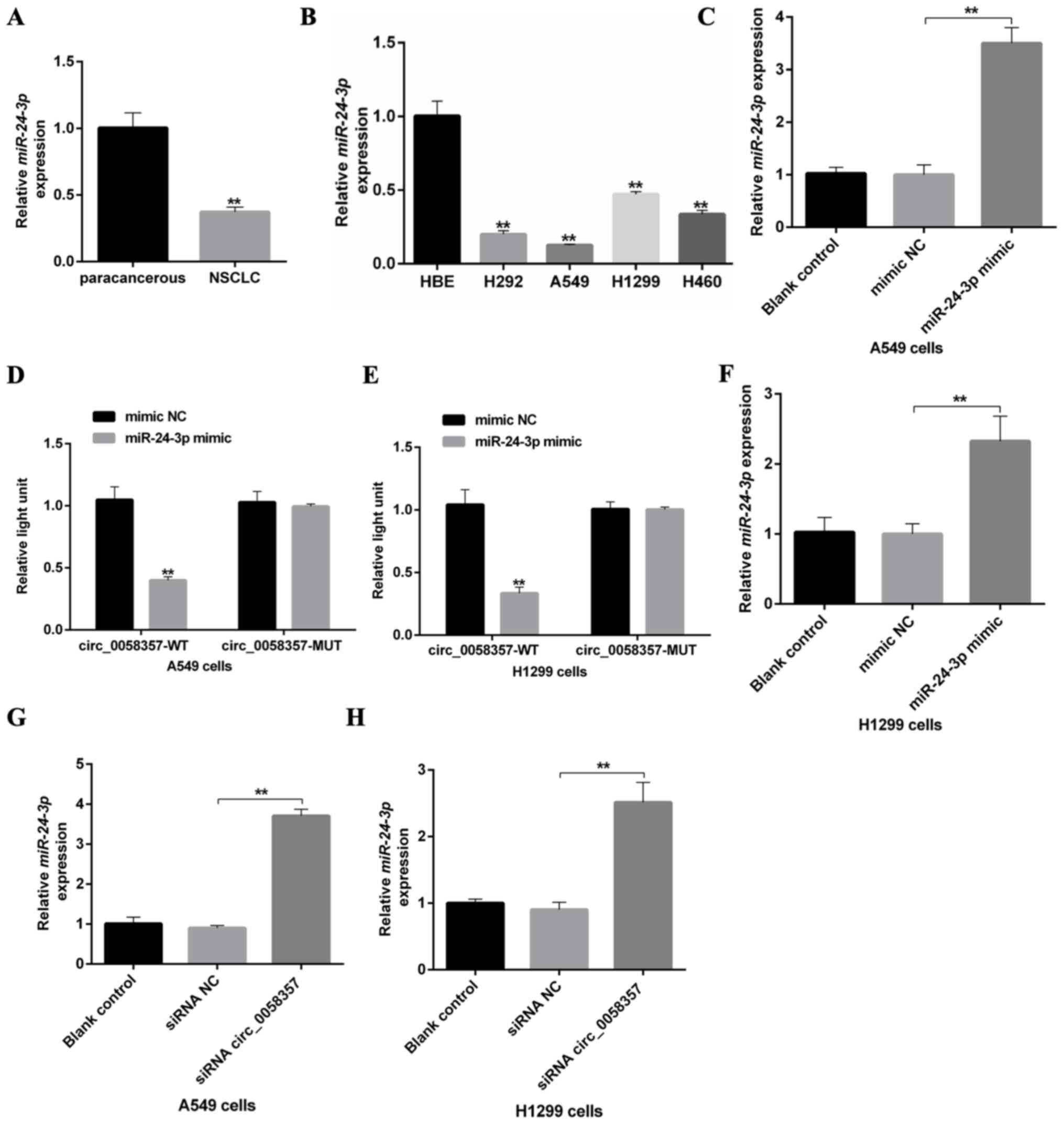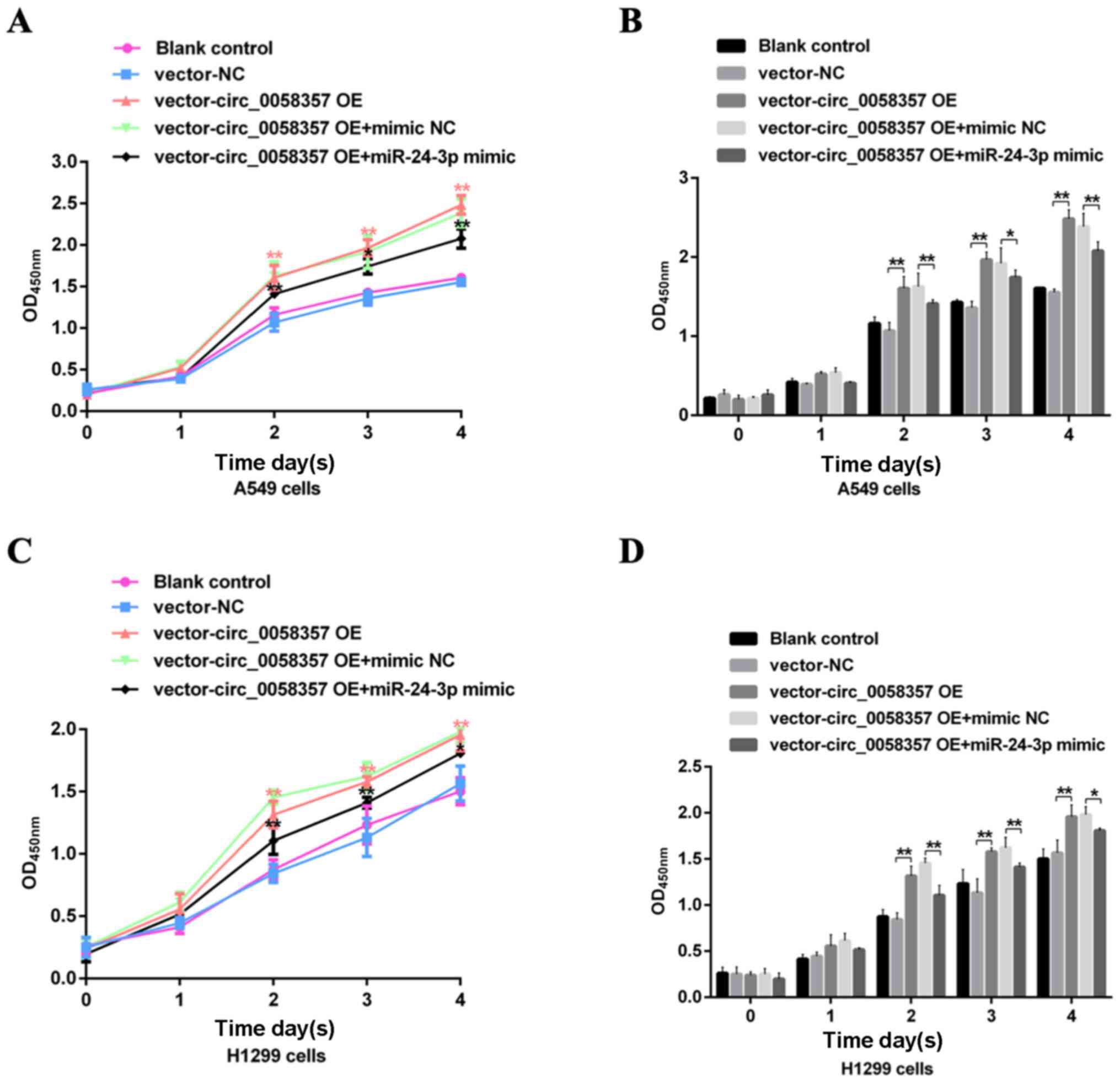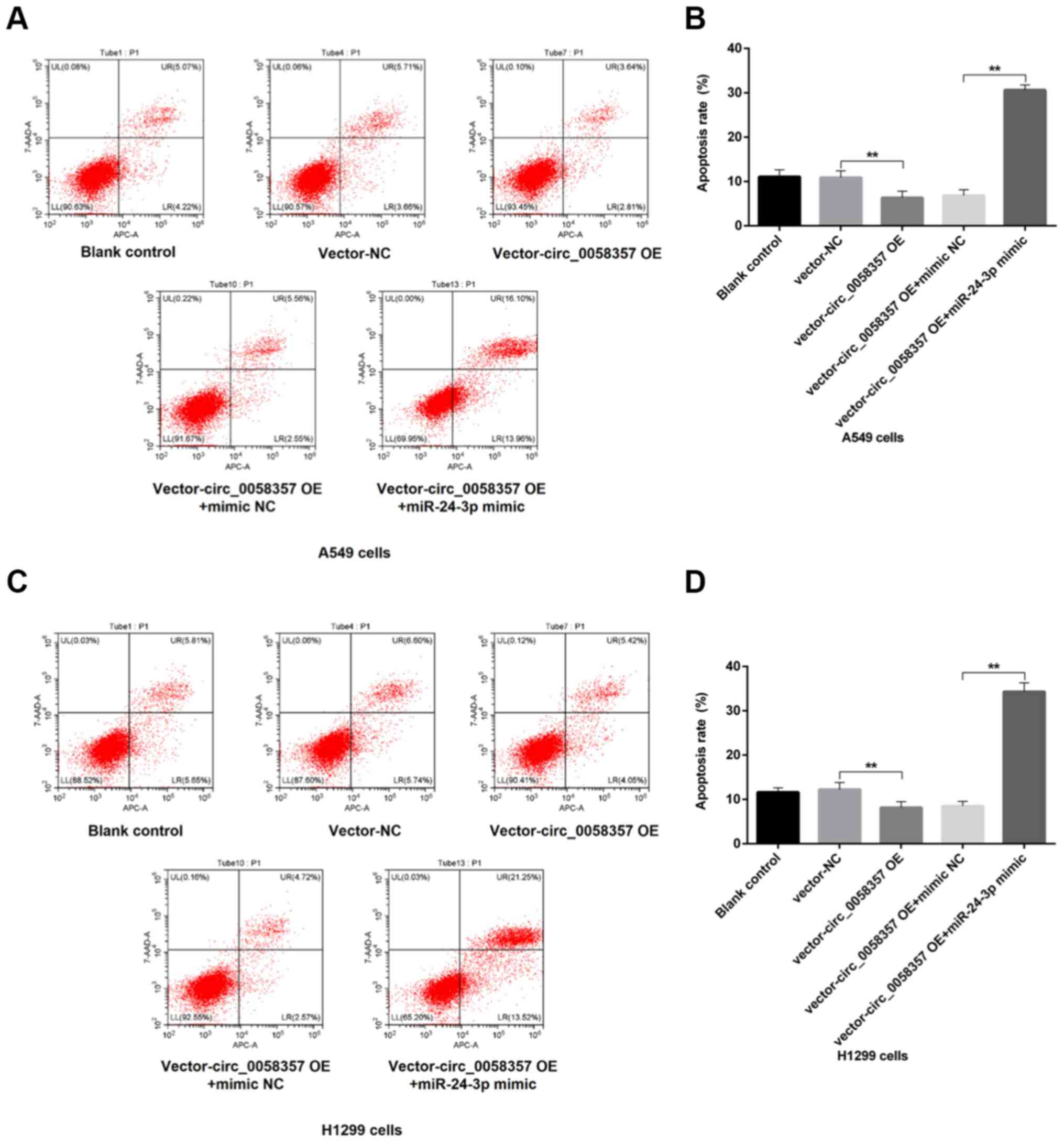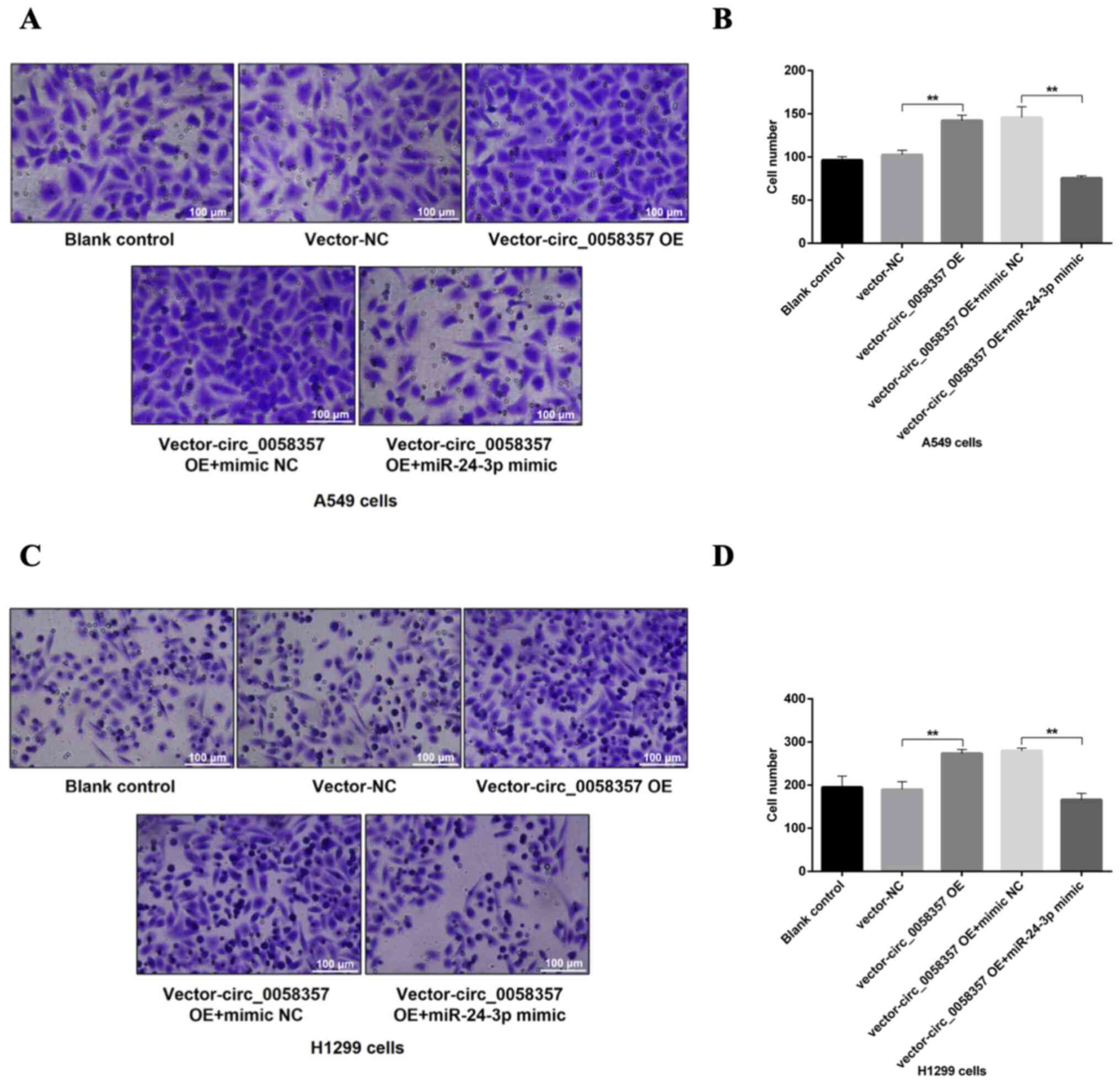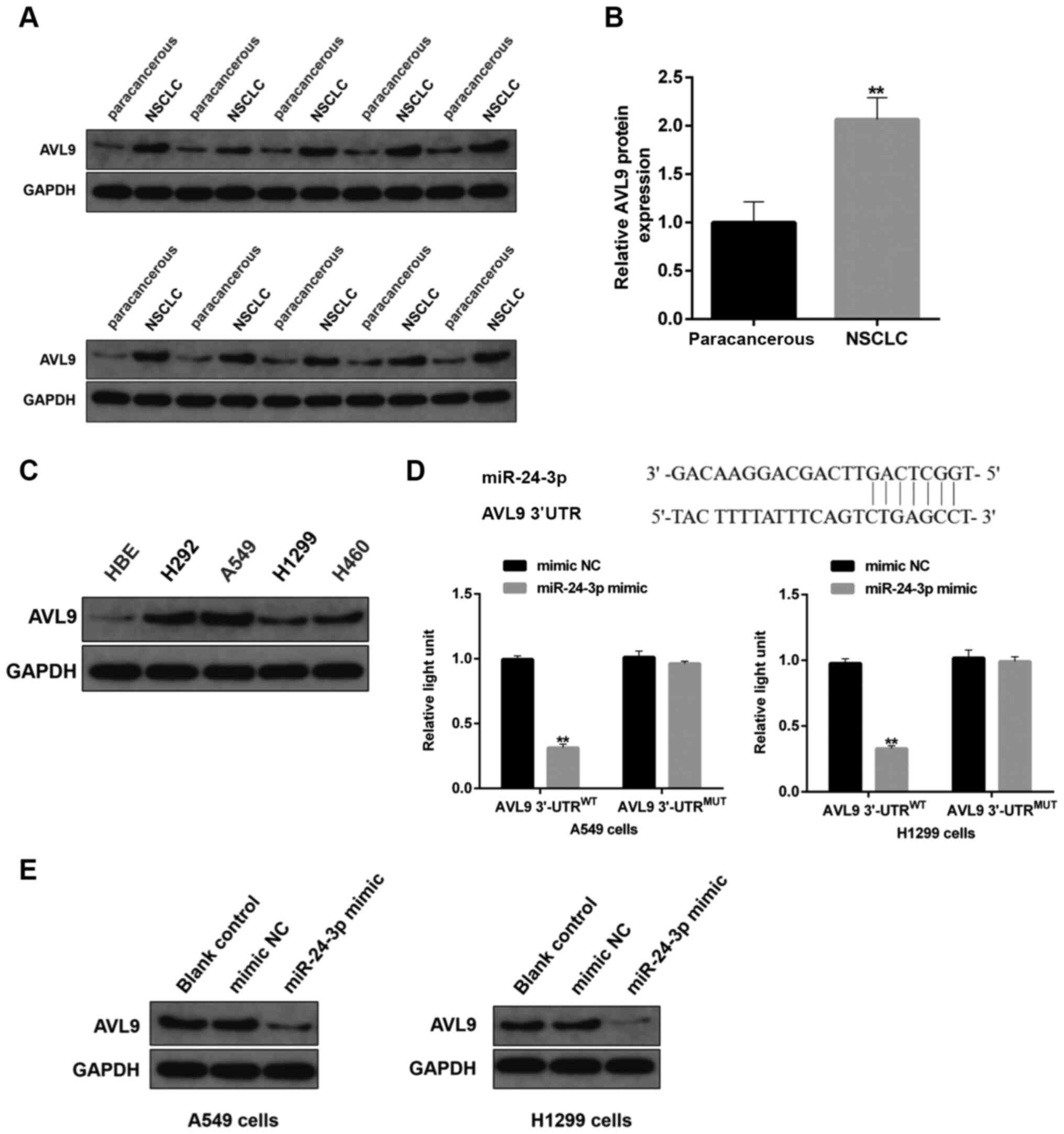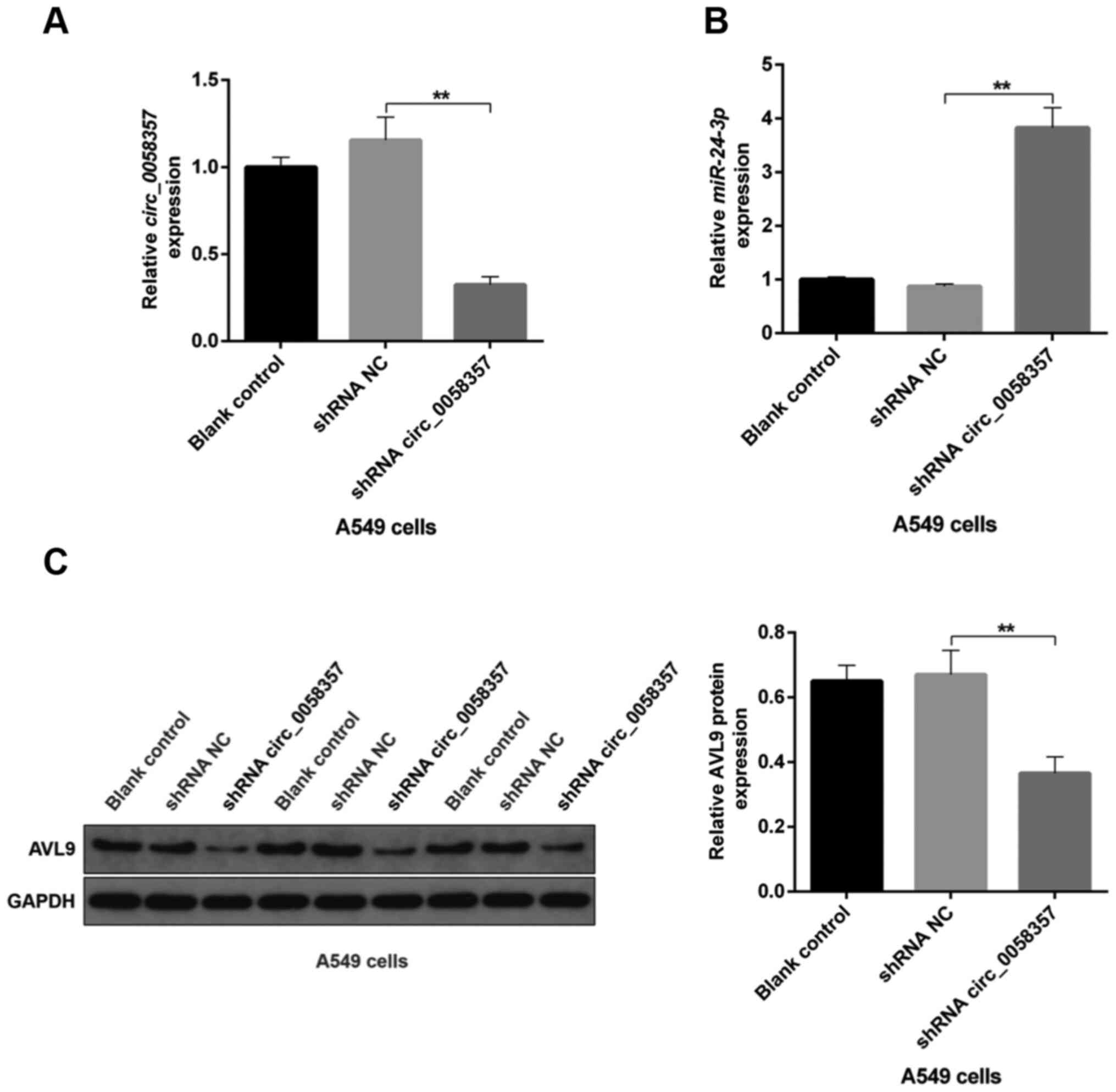|
1
|
Zheng HM, Zhan YT, Liu SL, Lu J, Luo J,
Feng J and Fan S: The roles of tumor-derived exosomes in non-small
cell lung cancer and their clinical implications. J Exp Clin Canc
Res. 37:2262018. View Article : Google Scholar : PubMed/NCBI
|
|
2
|
Siegel RL, Miller KD and Jemal A: Cancer
statistics, 2020. CA Cancer J Clin. 70:7–30. 2020. View Article : Google Scholar : PubMed/NCBI
|
|
3
|
Liu G, Pei F, Yang F, Li L, Amin AD, Liu
S, Buchan JR and Cho WC: Role of autophagy and apoptosis in
non-small-cell lung cancer. Int J Mol Sci. 18:3672017. View Article : Google Scholar : PubMed/NCBI
|
|
4
|
Rong B, Nan Y, Liu H and Gao W: Increased
stathmin correlates with advanced stage and poor survival of
non-small cell lung cancer. Cancer Biomark. 19:35–43. 2017.
View Article : Google Scholar : PubMed/NCBI
|
|
5
|
Liu ZL, Zhu WR, Zhou WC, Ying HF, Zheng L,
Guo YB, Chen JX and Shen XH: Traditional Chinese medicinal herbs
combined with epidermal growth factor receptor tyrosine kinase
inhibitor for advanced non-small cell lung cancer: A systematic
review and meta-analysis. J Integr Med. 12:346–358. 2014.
View Article : Google Scholar : PubMed/NCBI
|
|
6
|
Gupta GP and Massague J: Cancer
metastasis: Building a framework. Cell. 127:679–695. 2006.
View Article : Google Scholar : PubMed/NCBI
|
|
7
|
Cui J, Li W, Liu G, Chen X, Gao X, Lu H
and Lin D: A novel circular RNA, hsa_circ_0043278, acts as a
potential biomarker and promotes non-small cell lung cancer cell
proliferation and migration by regulating miR-520f. Artif Cells
Nanomed Biotechnol. 47:810–821. 2019. View Article : Google Scholar : PubMed/NCBI
|
|
8
|
Xie G: Circular RNA hsa-circ-0012129
promotes cell proliferation and invasion in 30 cases of human
glioma and human glioma cell lines U373, A172, and SHG44, by
targeting MicroRNA-661 (miR-661). Med Sci Monit. 24:2497–2507.
2018. View Article : Google Scholar : PubMed/NCBI
|
|
9
|
Zhang Z, Yu K, Liu O, Xiong Y, Yang X,
Wang S, Zhang S, Feng Y and Peng Y: Expression profile and
bioinformatics analyses of circular RNAs in keloid and normal
dermal fibroblasts. Exp Cell Res. 388:1117992020. View Article : Google Scholar : PubMed/NCBI
|
|
10
|
Yu W, Jiang H, Zhang H and Li J:
Hsa_circ_0003998 promotes cell proliferation and invasion by
targeting miR-326 in non-small cell lung cancer. Onco Targets Ther.
11:5569–5577. 2018. View Article : Google Scholar : PubMed/NCBI
|
|
11
|
Liu C, Zhang Z and Qi D: Circular RNA
hsa_circ_0023404 promotes proliferation, migration and invasion in
non-small cell lung cancer by regulating miR-217/ZEB1 axis. Onco
Targets Ther. 12:6181–6189. 2019. View Article : Google Scholar : PubMed/NCBI
|
|
12
|
Wang L, Tong X, Zhou Z, Wang S, Lei Z,
Zhang T, Liu Z, Zeng Y, Li C, Zhao J, et al: Circular RNA
hsa_circ_0008305 (circPTK2) inhibits TGF-β-induced
epithelial-mesenchymal transition and metastasis by controlling
TIF1γ in non-small cell lung cancer. Mol Cancer. 17:1402018.
View Article : Google Scholar : PubMed/NCBI
|
|
13
|
Zhang L, Nebane NM, Wennerberg K, Li Y,
Neubauer V, Hobrath JV, McKellip S, Rasmussen L, Shindo N, Sosa M,
et al: A high-throughput screen for chemical inhibitors of exocytic
transport in yeast. Chembiochem. 11:1291–1301. 2010. View Article : Google Scholar : PubMed/NCBI
|
|
14
|
Harsay E and Schekman R: Avl9p, a member
of a novel protein superfamily, functions in the late secretory
pathway. Mol Biol Cell. 18:1203–1219. 2007. View Article : Google Scholar : PubMed/NCBI
|
|
15
|
Li Y, Xu J, Xiong H, Ma Z, Wang Z, Kipreos
ET, Dalton S and Zhao S: Cancer driver candidate genes AVL9,
DENND5A and NUPL1 contribute to MDCK cystogenesis. Oncoscience.
1:854–865. 2014. View Article : Google Scholar : PubMed/NCBI
|
|
16
|
Tang J, Li Y, Lyon K, Camps J, Dalton S,
Ried T and Zhao S: Cancer driver-passenger distinction via sporadic
human and dog cancer comparison: A proof-of-principle study with
colorectal cancer. Oncogene. 33:814–822. 2014. View Article : Google Scholar : PubMed/NCBI
|
|
17
|
Wang H, Yu M, Hu W, Chen X, Luo Y, Lin X,
Zeng Y and Yao X: Linc00662 promotes tumorigenesis and progression
by regulating miR-497-5p/AVL9 axis in colorectal cancer. Front
Genet. 10:13852020. View Article : Google Scholar : PubMed/NCBI
|
|
18
|
Livak KJ and Schmittgen TD: Analysis of
relative gene expression data using real-time quantitative PCR and
the 2(-Delta Delta C(T)). Methods. 25:402–408. 2001. View Article : Google Scholar : PubMed/NCBI
|
|
19
|
Olbromski M, Rzechonek A, Grzegrzolka J,
Glatzel-Plucinska N, Chachaj A, Werynska B, Podhorska-Okolow M and
Dziegiel P: Influence of miR-7a and miR-24-3p on the SOX18
transcript in lung adenocarcinoma. Oncol Rep. 39:201–208.
2018.PubMed/NCBI
|
|
20
|
Zhang S, Zeng X, Ding T, Guo L, Li Y, Ou S
and Yuan H: Microarray profile of circular RNAs identifies
hsa_circ_0014130 as a new circular RNA biomarker in non-small cell
lung cancer. Sci Rep. 8:28782018. View Article : Google Scholar : PubMed/NCBI
|
|
21
|
Qu D, Yan B, Xin R and Ma T: A novel
circular RNA hsa_circ_0020123 exerts oncogenic properties through
suppression of miR-144 in non-small cell lung cancer. Am J Cancer
Res. 8:1387–1402. 2018.PubMed/NCBI
|
|
22
|
Zhu X, Wang X, Wei S, Chen Y, Chen Y, Fan
X, Han S and Wu G: hsa_circ_0013958: A circular RNA and potential
novel biomarker for lung adenocarcinoma. FEBS J. 284:2170–2182.
2017. View Article : Google Scholar : PubMed/NCBI
|
|
23
|
Li J, Wang J, Chen Z, Chen Y and Jin M:
Hsa_circ_0079530 promotes cell proliferation and invasion in
non-small cell lung cancer. Gene. 665:1–5. 2018. View Article : Google Scholar : PubMed/NCBI
|
|
24
|
Jiang MM, Mai ZT, Wan SZ, Chi YM, Zhang X,
Sun BH and Di QG: Microarray profiles reveal that circular RNA
hsa_circ_0007385 functions as an oncogene in non-small cell lung
cancer tumorigenesis. J Cancer Res Clin Oncol. 144:667–674. 2018.
View Article : Google Scholar : PubMed/NCBI
|
|
25
|
Cortés-López M and Miura P: Emerging
functions of circular RNAs. Yale J Biol Med. 89:527–537. 2016.
|
|
26
|
Gil J, Ramsey D, Pawlowski P, Szmida E,
Leszczynski P, Bebenek M and Sasiadek MM: Interdependence between
an expression of the ATG9A gene and the BAX gene in colorectal
cancer. J Biol Regul Homeost Agents. 33:183–185. 2019.PubMed/NCBI
|
|
27
|
Claude-Taupin A, Fonderflick L, Gauthier
T, Mansi L, Pallandre JR, Borg C, Perez V, Monnien F, Algros MP,
Vigneron M, et al: ATG9A is overexpressed in triple negative breast
cancer and its in vitro extinction leads to the inhibition of
pro-cancer phenotypes. Cells. 7:2482018. View Article : Google Scholar : PubMed/NCBI
|
|
28
|
Lyu DB and Huang SL: The emerging role and
clinical implication of human exonic circular RNA. Rna Biol.
14:1000–1006. 2017. View Article : Google Scholar : PubMed/NCBI
|
|
29
|
Kulcheski FR, Christoff AP and Margis R:
Circular RNAs are miRNA sponges and can be used as a new class of
biomarker. J Biotechnol. 238:42–51. 2016. View Article : Google Scholar : PubMed/NCBI
|
|
30
|
Li X, Yang B, Ren H, Xiao T, Zhang L, Li
L, Li M, Wang X, Zhou H and Zhang W: Hsa_circ_0002483 inhibited the
progression and enhanced the Taxol sensitivity of non-small cell
lung cancer by targeting miR-182-5p. Cell Death Dis. 10:9532019.
View Article : Google Scholar : PubMed/NCBI
|
|
31
|
Zhou Y, Zheng X, Xu B, Chen L, Wang Q,
Deng H and Jiang J: Circular RNA hsa_circ_0004015 regulates the
proliferation, invasion, and TKI drug resistance of non-small cell
lung cancer by miR-1183/PDPK1 signaling pathway. Biochem Biophys
Res Commun. 508:527–535. 2019. View Article : Google Scholar : PubMed/NCBI
|
|
32
|
Sun X, Xiao D, Xu T and Yuan Y:
miRNA-24-3p promotes cell proliferation and regulates
chemosensitivity in head and neck squamous cell carcinoma by
targeting CHD5. Future Oncol. 12:2701–2712. 2016. View Article : Google Scholar : PubMed/NCBI
|
|
33
|
Lu K, Wang J, Song Y, Zhao S, Liu H, Tang
D, Pan B, Zhao H and Zhang Q: miRNA-24-3p promotes cell
proliferation and inhibits apoptosis in human breast cancer by
targeting p27Kip1. Oncol Rep. 34:995–1002. 2015. View Article : Google Scholar : PubMed/NCBI
|
|
34
|
Fan JC, Zeng F, Le YG and Xin L: LncRNA
CASC2 inhibited the viability and induced the apoptosis of
hepatocellular carcinoma cells through regulating miR-24-3p. J Cell
Biochem. 119:6391–6397. 2018. View Article : Google Scholar : PubMed/NCBI
|
|
35
|
Li X, Han X, Wei P, Yang J and Sun J:
Knockdown of lncRNA CCAT1 enhances sensitivity of paclitaxel in
prostate cancer via regulating miR-24-3p and FSCN1. Cancer Biol
Ther. 21:452–462. 2020. View Article : Google Scholar : PubMed/NCBI
|
|
36
|
Su C, Shi K, Cheng X, Han Y, Li Y, Yu D
and Liu Z: Long noncoding RNA LINC00472 inhibits proliferation and
promotes apoptosis of lung adenocarcinoma cells via regulating
miR-24-3p/DEDD. Technol Cancer Res Treat. 17:15330338187904902018.
View Article : Google Scholar : PubMed/NCBI
|
|
37
|
Liu H, Wang X, Wang ZY and Li L:
Circ_0080425 inhibits cell proliferation and fibrosis in diabetic
nephropathy via sponging miR-24-3p and targeting fibroblast growth
factor 11. J Cell Physiol. 235:4520–4529. 2020. View Article : Google Scholar : PubMed/NCBI
|
|
38
|
Zhang W, Wang J, Chai R, Zhong G, Zhang C,
Cao W, Yan L, Zhang X and Xu Z: Hypoxia-regulated lncRNA CRPAT4
promotes cell migration via regulating AVL9 in clear cell renal
cell carcinomas. Onco Targets Ther. 11:4537–4545. 2018. View Article : Google Scholar : PubMed/NCBI
|
|
39
|
Linford A, Yoshimura S, Nunes Bastos R,
Langemeyer L, Gerondopoulos A, Rigden DJ and Barr FA: Rab14 and its
exchange factor FAM116 link endocytic recycling and adherens
junction stability in migrating cells. Dev Cell. 22:952–966. 2012.
View Article : Google Scholar : PubMed/NCBI
|
|
40
|
Wang M and Petersen NO: Lipid-coated gold
nanoparticles promote lamellar body formation in A549 cells.
Biochim Biophys Acta. 1831:1089–1097. 2013. View Article : Google Scholar : PubMed/NCBI
|
|
41
|
Schaaij-Visser TB, de Wit M, Lam SW and
Jiménez CR: The cancer secretome, current status and opportunities
in the lung, breast and colorectal cancer context. Biochim Biophys
Acta. 1834:2242–2258. 2013. View Article : Google Scholar : PubMed/NCBI
|
|
42
|
Zhang L, Huang M and Harsay E: A chemical
genetic screen for modulators of exocytic transport identifies
inhibitors of a transport mechanism linked to GTR2 function.
Eukaryot Cell. 9:116–126. 2010. View Article : Google Scholar : PubMed/NCBI
|















